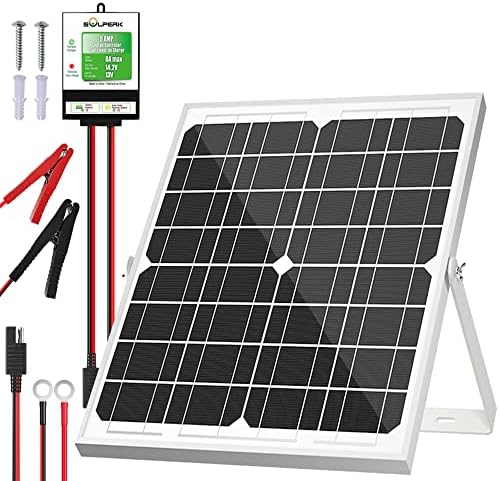# Going Green: Off-Grid Solar Systems for Eco-Conscious Homeowners
There’s a serene magic in waking up to the soft glow of morning light filtering through the trees, the gentle hum of nature bustling outside your window. Picture this: you step outside to take a breath of fresh air, and it feels pure, revitalizing. Every morning is a new adventure off the grid, but not just in terms of location—it’s about embracing a lifestyle that resonates with sustainability, innovation, and self-sufficiency. As eco-conscious homeowners explore new horizons, off-grid solar systems are becoming a beacon of hope for those who want to reduce their carbon footprint while living harmoniously with nature.
## The Allure of Going Off-Grid
The allure of going off-grid combines the convenience of modern technology with the rugged charm of nature. Imagine generating your own power without relying on the unreliable grid! Off-grid solar systems allow you to harness the sun’s energy, turning it into the lifeblood of your home. This means enjoying your evening lights without fretting over energy bills, and the knowledge that your power source is clean and renewable.
Not only does this lifestyle make a positive impact on the environment, but it also fosters a sense of independence. You can grow your own food, collect rainwater, and essentially create a micro-ecosystem that minimizes your ecological footprint. For the eco-conscious homeowner, this isn’t just a trend; it’s a conscious choice to live more sustainably.
## Understanding Off-Grid Solar Systems
### What Is an Off-Grid Solar System?
An off-grid solar system is a solar energy setup that stands alone, independent of the traditional electricity grid. It typically includes solar panels, an inverter, batteries for energy storage, and a charge controller to regulate the energy flow. This system provides energy for your home’s needs, from heating and cooling to powering your appliances.
#### 1. **Solar Panels**
These are the heart of your system, converting sunlight into electricity. They’re typically mounted on rooftops or on the ground to maximize sun exposure.
#### 2. **Inverter**
This device converts the direct current (DC) generated by solar panels into alternating current (AC), which is suitable for most household appliances.
#### 3. **Batteries**
Energy storage is the lifeblood of any off-grid system. Batteries store excess energy generated during sunny days for use during overcast days or at night.
#### 4. **Charge Controller**
This component ensures that your batteries charge correctly, preventing overcharging and maximizing their lifespan.
### The Benefits of Going Off-Grid with Solar
1. **Environmental Impact**: The biggest perk of going solar is reducing your carbon footprint. You’ll be generating clean energy, which means less reliance on fossil fuels and lower greenhouse gas emissions.
2. **Cost Savings**: While the initial investment may seem steep, the long-term savings on energy bills are significant. Plus, many states offer tax incentives for solar installations.
3. **Energy Independence**: With fluctuating energy prices and grid insecurity, having your own energy source enhances your autonomy. Your energy bills won’t surprise you anymore!
4. **Connection with Nature**: Living off-grid encourages a deeper connection with the environment. Witnessing daily changes in your surroundings and understanding the importance of sustainability becomes a natural part of life.
5. **Community Building**: Embracing off-grid living can lead to stronger connections within your community. Many eco-conscious homeowners band together, sharing knowledge and resources.
## Steps to Set Up Your Off-Grid Solar System
Setting up an off-grid solar system can seem daunting, but it’s a worthwhile endeavor. Here’s a step-by-step guide to getting started:
### Step 1: Assess Your Energy Needs
Before diving into purchasing equipment, understand how much energy your household consumes. Check your utility bills from the past year to estimate your daily kilowatt-hours (kWh) usage. This assessment will guide your entire solar system design.
### Step 2: Choose the Right Equipment
Based on your energy needs, determine the type and quantity of solar panels, batteries, and inverters required. Here, seeking advice from qualified professionals can be invaluable.
### Step 3: Design Your System
There are many configurations, so consider factors like your roof space, solar exposure, and local climate. A well-designed system is crucial for efficiency.
### Step 4: Installation
You can choose to DIY your solar installation or hire professionals. If you’re confident in your abilities, there are plenty of resources available online. For those who prefer a hassle-free route, professional installation ensures everything is up to code.
### Step 5: Monitor and Maintain
Once your system is up and running, it’s vital to monitor its performance regularly. Keeping an eye on the batteries and the overall system health will ensure longevity and efficiency.
## Pro Tips for Eco-Conscious Homeowners
### 1. Orient Your Solar Panels Correctly
Make sure your solar panels face true south (or true north in the Southern Hemisphere) for maximum sunlight exposure. This simple adjustment can significantly increase your energy production.
### 2. Use Energy-Efficient Appliances
Invest in ENERGY STAR-rated appliances to reduce your overall energy consumption. This not only helps in decreasing demand on your solar system but also extends the lifespan of your batteries.
### 3. Optimize Battery Use
Keep your batteries at optimal charge levels to prolong their lifespan. Avoid deep discharging, as it can lead to irreversible damage.
### 4. Consider Backup Options
Even the best systems run into challenges occasionally. Having a generator or alternate energy source, like a wind turbine, can provide extra reliability.
### 5. Get Familiar with Local Regulations
Before diving into your solar project, familiarize yourself with local zoning laws and building permits. This practice can save you from unexpected setbacks down the line.
## The Future of Off-Grid Solar Living
As technology continues to evolve, off-grid solar systems are becoming more efficient, affordable, and accessible than ever. The future looks bright for eco-conscious homeowners ready to embrace this sustainable way of life. Innovations in energy storage, smart grid solutions, and better solar technology pave the way for a greener, cleaner world.
Moreover, public perception is shifting; more people are recognizing the importance of sustainability. With this growth, communities are sprouting up centered around eco-living, creating supportive networks of like-minded individuals.
## Conclusion
If you’re ready to ditch the grid and embark on an eco-friendly adventure, off-grid solar systems offer the perfect blend of independence and sustainability. The journey to living off the grid is as rewarding as it is challenging, filled with learning experiences and amazing moments of connection to nature.
With the right tools and mindset, you can pave the way for your own slice of eco-conscious living, all while nurturing the planet we call home. Whether you’re looking to reduce your environmental impact or simply want to enjoy the tranquility of a nature-connected lifestyle, stepping into the world of off-grid solar systems is a powerful way to make your mark. Join the growing community of eco-conscious homeowners leading the charge toward a greener future, and relish every moment of this remarkable journey!



